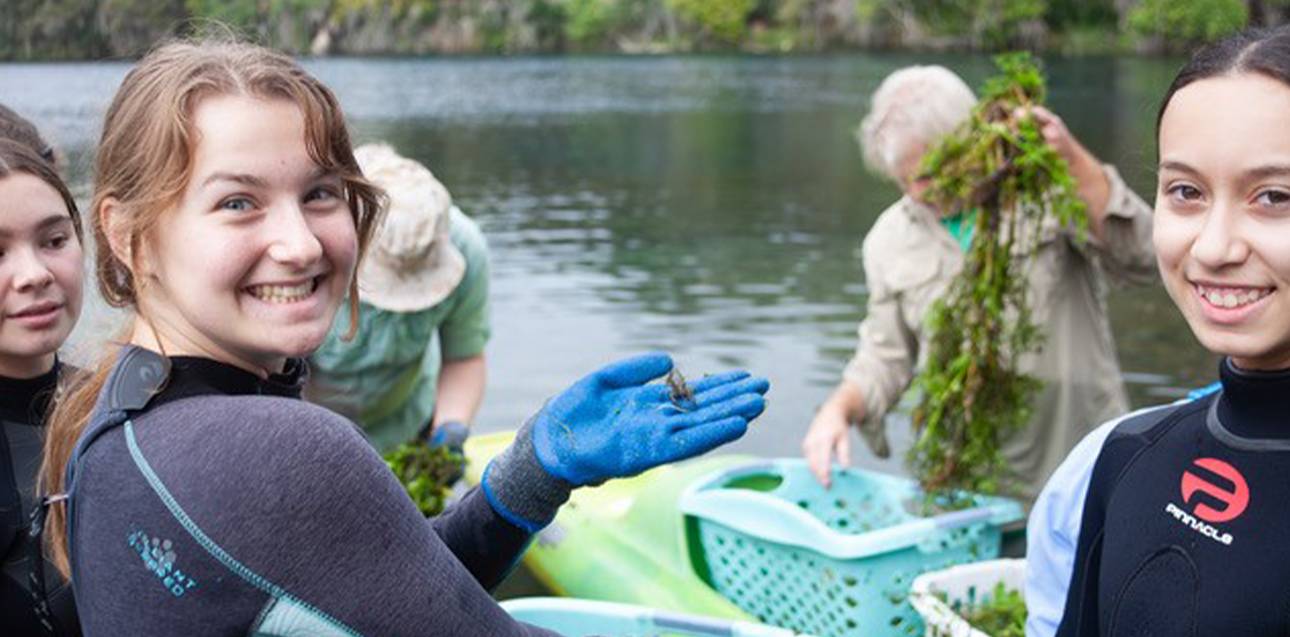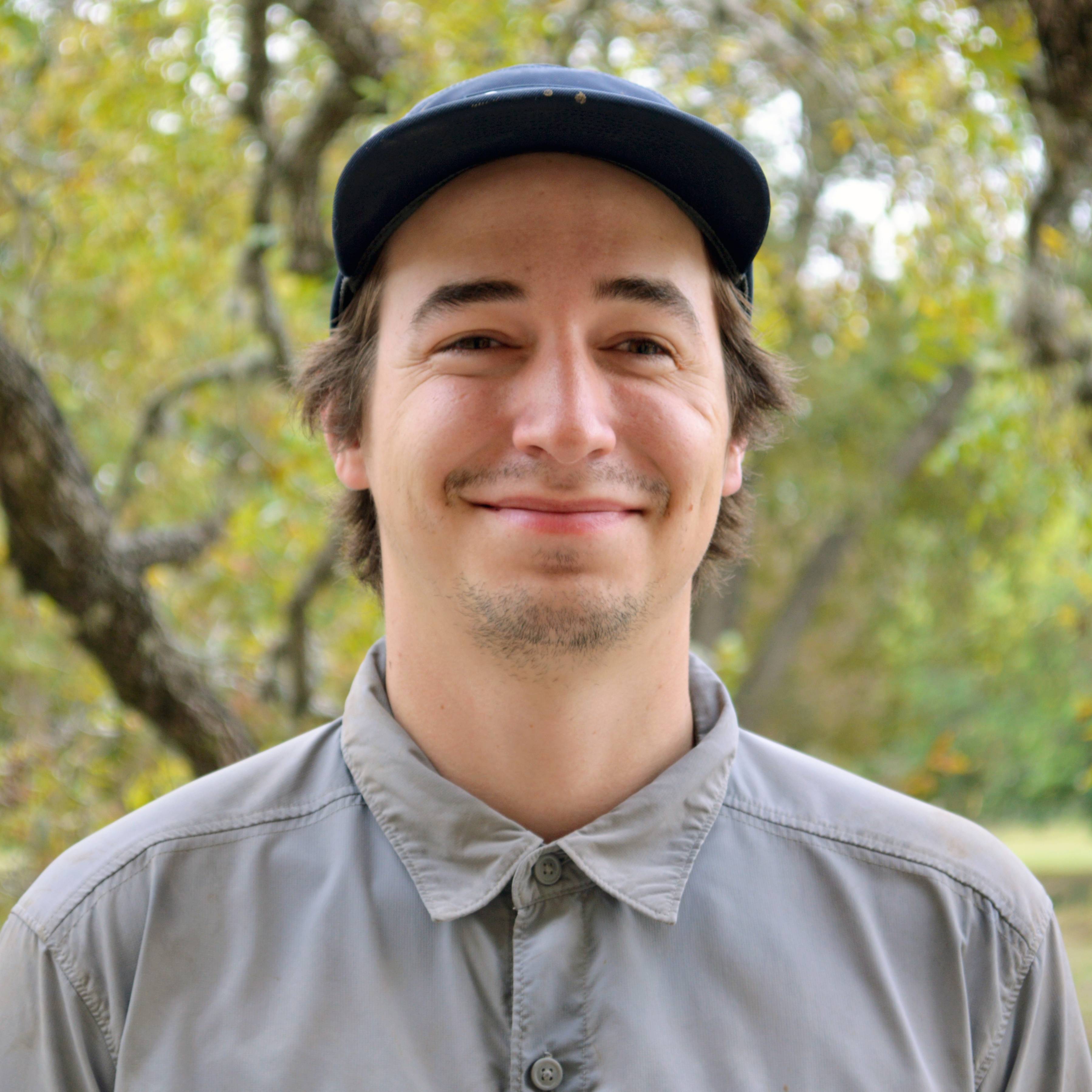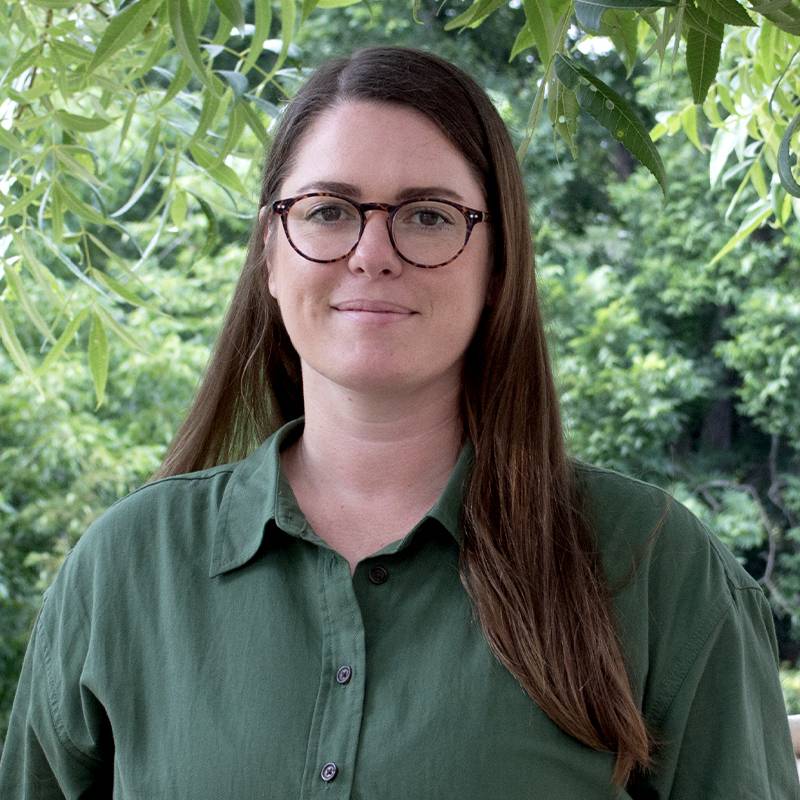Watershed Aquatic Invasive Vegetation Suppression (WAIVS)

Project Summary
Project WAIVS, Watershed Aquatic Invasive Vegetation Suppression, is an initiative to remove non-native vegetation from Spring Lake and the uppermost reach of the San Marcos River. Unfortunately, these headwaters areas host invasive aquatic vegetation that harms the habitats of endangered species such as fountain darters and Texas wild-rice. The holistic goal is to enhance the Edwards Aquifer Habitat Conservation Plan in underworked areas to ensure the sustainability of restoration efforts. The San Marcos River Foundation and the Meadows Center's Watershed Services division have been a huge part of various plant removal initiatives on Spring Lake over the past several years, and they are essential to connecting the community to the river for Project WAIVS.
To achieve this, staff biologists and students working under the Ecological Research Group work tirelessly to remove noxious plants by hand, navigating the water adjacent to university property using kayak, snorkel, and SCUBA diving. Our approach includes carefully sorting and washing plants to ensure native fauna remain in the water before they are composted. Also, we include the community in our battle against invasive flora by holding monthly volunteer events in both Spring Lake and the San Marcos River.
In 2023, the Environmental Service Committee funded a project to reduce floating invasive plants in Spring Lake, watercress (Nasturtium officionale) and water lettuce (Pistia stratiotes). However, that same year, water sprite (Ceratopteris thalictroides) became a big problem, possibly due to extreme drought conditions. To tackle the problem, the Ecological Research Group is excited to upscale our efforts under Project WAIVS, expanding our efforts to include the removal of water sprite, Hydrilla verticillata, and Hygrophila polysperma. Efforts have been expanded to allow Hydrilla removal in Spring Lake and volunteer events in the river from Spring Lake Dam to Sewell Park.
Project WAIVS kicked off in January of 2024. Our dedicated group of student workers, volunteers, and staff will work hard toward the end goal of functional eradication of these species in the university zone of the San Marcos River.
To get involved in volunteer events related to Project WAIVS, email info@sanmarcosriver.org with your name and message of interest.
Project Leads
Collin Garoutte, M.S.
Wildlife & Fisheries Biologist, Habitat Field Crew
(512) 245-3553
cjg115@txstate.edu
Emily Lorkovic, M.S.
Wildlife & Fisheries Biologist, Habitat Field Crew
(512) 245-3553
e_l328@txstate.edu
Collaborators and Funders
This work would not be possible without support from the Environmental Service Committee at Texas State University. Visit www.txst.edu/esc to learn more about the projects they fund. We are also grateful for the collaboration with the San Marcos River Foundation. For more information about their mission, visit sanmarcosriver.org.





